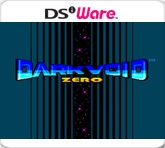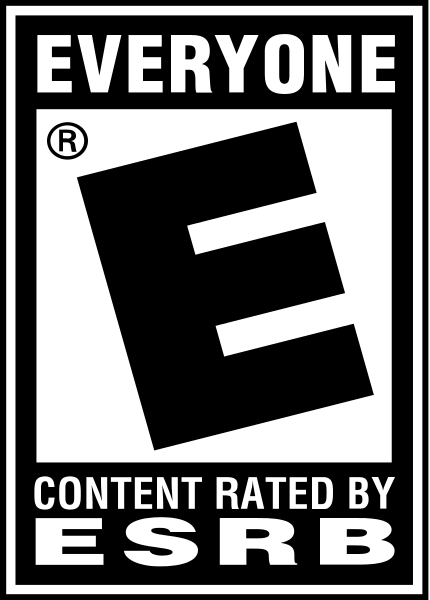Existing User Log In
New User Registration
Register for a free account to gain full access to the VGChartz Network and join our thriving community.





America - Front


America - Back



Other Ocean Interactive
Platform
 01/18/10 Capcom
01/18/10 Capcom  (Add Date)
(Add Date) 03/05/10 Capcom
03/05/10 Capcom
| Owners: | 15 | |
| Favorite: | 0 | |
| Tracked: | 1 | |
| Wishlist: | 1 | |
| Now Playing: | 0 | |
Promoted as a lost N.E.S.-era arcade game, Dark Void Zero attempts to bring the player back to a long gone time in gaming history: a simpler time, where high end graphics and a deep story meant little. A time where gameplay and replayability were the key ingredients in making an instant classic. So does Dark Void Zero cement Capcom as the masters of the 8-bit revival, or does it simply stay stuck in the past?
You play as Rusty, the first human born in the void, and humanity's only defence against the evil ‘Watchers’ who (in typical alien fashion) have decided that Earth would make a nice summer home and launched an invasion. Along the way you get help from (real life) famous scientist Nikola Tesla who supplies you with information about your location and objectives; and his most recent invention, the trusty rocket pack. The story keeps in line with Capcom’s 8-bit efforts of the 1980’s, with the narrative taking a back seat to the core gameplay and only being present in between levels in minimal form. However, Dark Void Zero does throw some 8-bit cutscenes and story elements at the player to keep them focused on their goals. This being said it’s quite clear the story is designed as filler material and is never really made clear throughout Rusty’s quest through the void. It should also be noted that Dark Void Zero is a spinoff of Dark Void (released for the Xbox 360, PS3 and PC) and has no relation other than the title and setting to link the games together.
What is unique about the story is the interesting ‘history’ Capcom fabricated for the game. According to them, Dark Void Zero was being designed near the end of the 80’s with the goal of pushing N.E.S. hardware past it’s limits through the use of extra internal chipsets (in the same way the Super FX chip made Star Fox possible on the S.N.E.S.). As development continued, the game was moved to Nintendo’s Play Choice 10 arcade system and would utilise a revolutionary dual screen interface. As the game’s eventual release drew nearer, Capcom even held a contest and let the winner play and keep an early cartridge of the game. The winner? A young Jimmy Fallon, who for nearly 20 years was the only person who held a copy of the original game: Capcom’s code for the game was lost in an accident involving a magnet. So when Capcom decided to revisit this ‘lost project’, they contacted Jimmy Fallon and used the original game as the source to port it over to the DSi Ware service. As a thank you, Capcom even mentioned Jimmy in the final release.
Staying true to its 8-bit roots, Dark Void Zero utilises a very simple control scheme. You move Rusty with the D-pad, shoot with the ‘B’ button and jump with the ‘A’ button. The game also allows you to shoot in all 8 directions by aiming, again with the D-pad. When you are in possession of the jet pack, you double tap ‘A’ to start flying and release it to land, while in the air the D-pad once again controls direction. The game plays like a mix of Metroid and Castlevania. You wander around large maze-like levels, searching for keys to unlock new areas. Along the way you can collect weapons with different abilities - like the rocket launcher that can smash concrete barriers - as well as take on secondary objectives to earn a higher score. In fact, this high score is the only reward given to the player for completing a level, other than advancing to the next stage. Once you reach the end of a level you must face off against a boss before advancing to the next level, a classic formula which Capcom has proven they can master with games like Mega Man 9. But for some reason, it doesn’t seem to come together quite as well in Dark Void Zero. The straightforward objectives and repetition of the ‘get this key, now go get that key, and now this key’ gameplay may have worked back in 1989, but now gamers demand some form of variety, especially in a game that takes its inspiration from Metroid and Castlevania, two series that pride themselves on exploration and discovering new things; two things you will never find in Dark Void Zero.
When reviewing the visual aspects of Dark Void Zero I asked myself: Would this be a good looking N.E.S. game, and how would it compare to games from that era? The answers are simple: no, and poorly, respectively. The environments, while large, are boring and cluttered with way too many 8-bit details; it sometimes can become difficult to tell when an item is yours for the taking, or simply part of the background. The character design is also uninspired; Rusty seems tiny and lacks any sort of detail and sometimes can even get lost in all the unnecessary 8-bit flair. The enemies fare a little better: they are often large and menacing, and come in a variety of shapes and sizes. It’s almost as if Capcom forgot their design notes from Mega Man 9 and adopted a "more is better" philosophy for Dark Void Zero’s visuals, throwing so much 8-bit waste at the player that the game becomes an ugly, pixelated mess. The sounds and music of the game are (predictably) loyal to the game’s 8-bit inspirations. All the bloops and bleeps of the classic N.E.S. hardware are intact, and any retro gamer will immediately feel nostalgic listening to the game’s sound effects. The music, however, lacks any of the ‘flare’ offered up by (once again) Capcom’s Mega Man 9, with the tracks all sounding generic and uninspired. A true shame, considering Capcom’s mastery of 8-bit music.
Dark Void Zero is a bare-bones experience. The main game consists of only three levels, and the game can be completed in as little as an hour. There is no multiplayer mode and, despite the game’s heavy emphasis on setting high scores, there are no online leaderboards to share scores with friends. However, the game does offer three difficulty settings, allowing for some form of replayability. Some will point to the game’s 500 DSi Ware price point (5$) as the reason the game is lacking in any kind of post-game features, but considering that some N.E.S. games can last tons of hours (I’m looking at you Metroid) it’s a pretty poor excuse for a pretty poor game.
There is a certain novelty that goes along with making games in a classic style. You can stir feelings of nostalgia in people; make them remember a simpler time, a time when games were less complicated, easy to pick up, but near impossible to master: this is what any 8-bit revival should try to be. However, it is also possible to remind them why games evolved past simple bits and beeps; why we demanded better graphics and sounds, why gameplay evolved, and this is exactly the trapping that Dark Void Zero falls into.










|
|
|
|
|
|